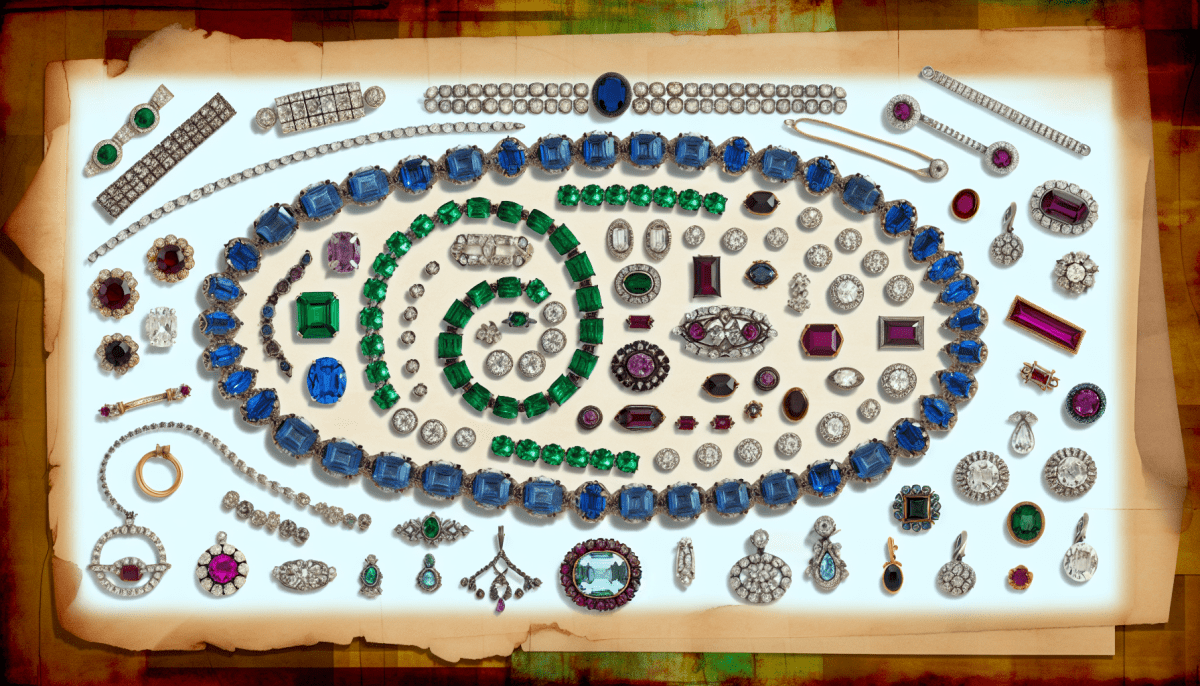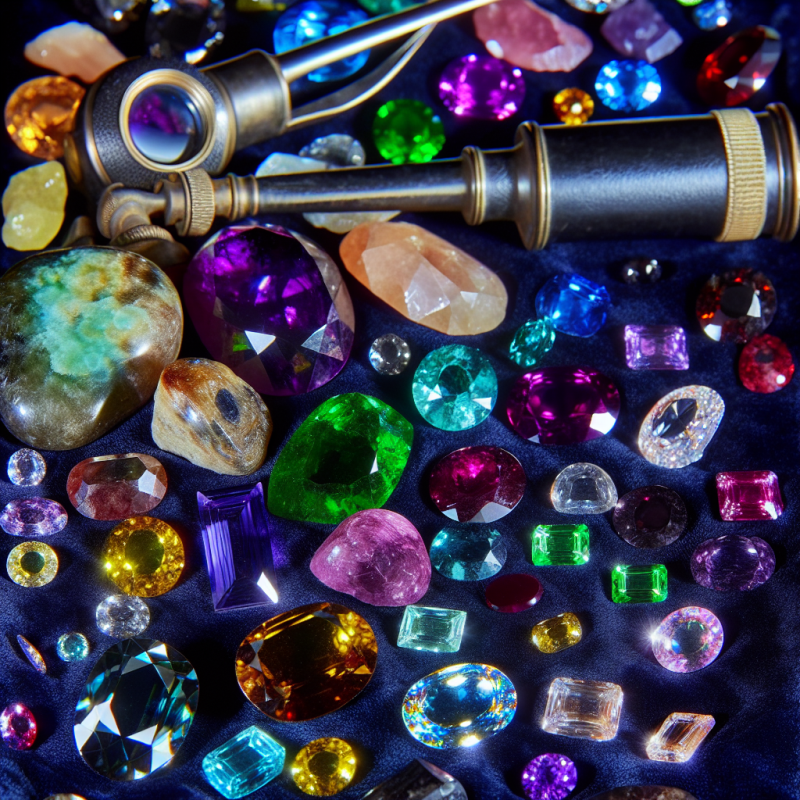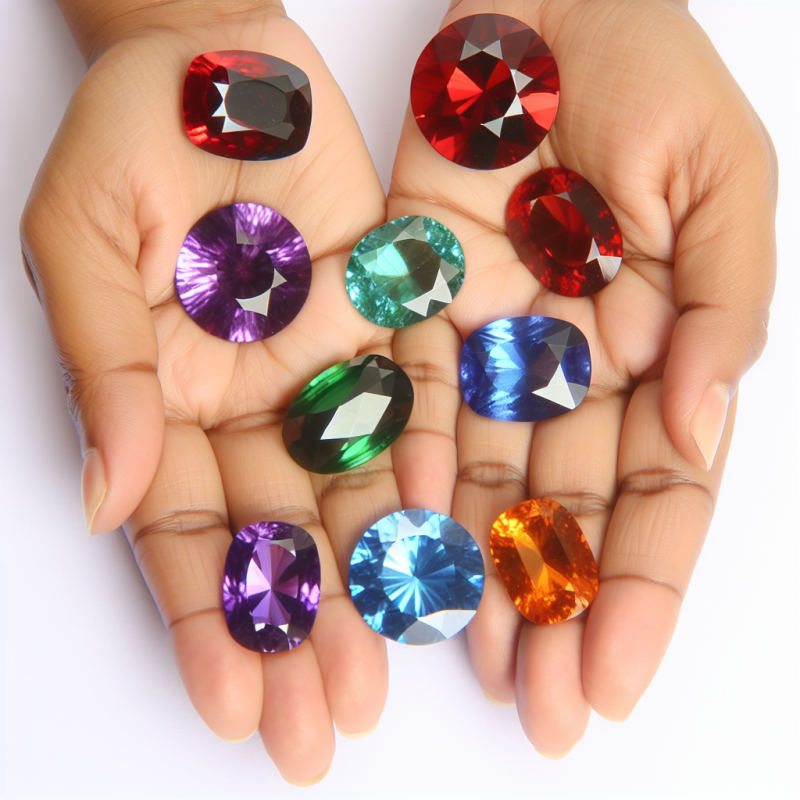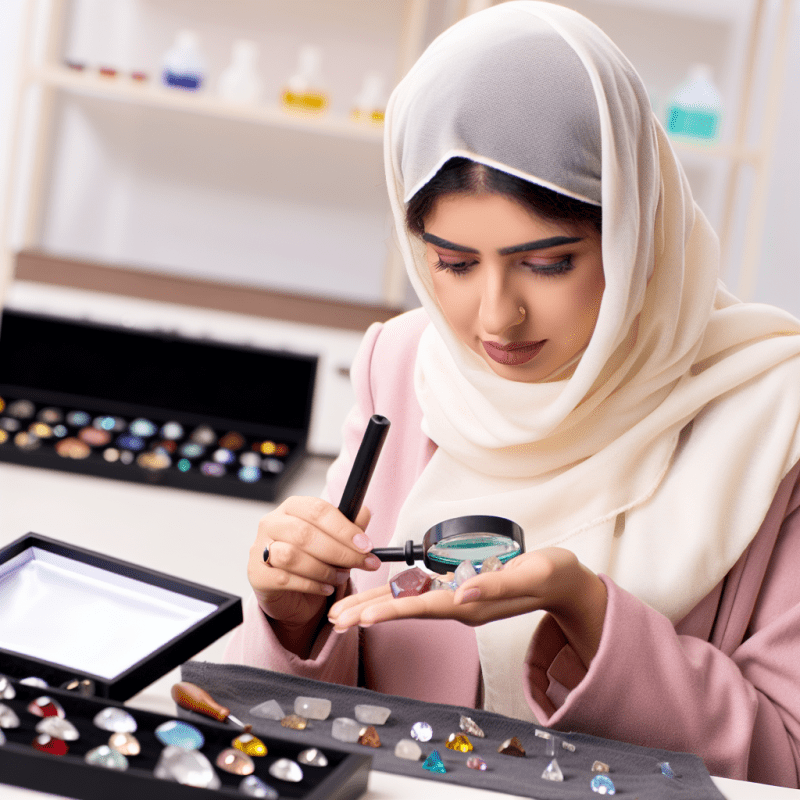The origins of gemstone jewelry can be traced back thousands of years, intertwined with the cultural and spiritual practices of ancient civilizations. In places like Egypt, gemstones were believed to hold magical properties and were often used in burial rituals. The Egyptians adorned their pharaohs with exquisite jewelry made from lapis lazuli, turquoise, and carnelian, tools to ensure protection and promote a safe passage to the afterlife. This belief in the power of gemstones extended to the common people, who incorporated them into talismans and amulets for protection and good fortune.
In ancient India, the art of crafting gemstone jewelry blossomed, with intricate designs showcasing the beauty of rubies, emeralds, and diamonds. These precious stones were not only prized for their aesthetics but also for their purported astrological benefits. Many believed that wearing specific gems could align one’s stars, bringing prosperity and health. The tradition of using gemstones in jewelry quickly spread, influencing styles in neighboring regions and leading to a rich tapestry of craftsmanship that still resonates in modern designs.
Meanwhile, in the Americas, indigenous cultures created stunning jewelry pieces using locally sourced gemstones. The Mayans and Aztecs, for example, utilized jade and turquoise in their ornaments, often linked to their gods and the earth itself. These pieces served both as decoration and as a means to communicate social status and spiritual beliefs. The vibrant colors and natural beauty of these stones reflected the deep connection these cultures had with nature and the universe.
Across the continents, gemstone jewelry has been cherished not only for its beauty but also for its symbolic meanings. In ancient Rome, gemstones were often associated with various gods and were worn to invoke favor or protection. This reverence for gemstones has transcended time and geography, leading to a global appreciation that continues today. From royal crowns to simple rings, the allure of gemstone jewelry unites people in an age-old celebration of beauty, craftsmanship, and heritage.
Ancient Cultures and Their Gemstone Beliefs
Throughout history, gemstones have held a special place in various ancient cultures. Each stone was believed to possess unique powers and meanings, often tied to the natural world or spiritual beliefs. For example, the ancient Egyptians revered lapis lazuli for its deep blue color, which symbolized the night sky and was believed to bring wisdom and truth. This precious stone was often used in burial masks and jewelry, highlighting its importance in both life and the afterlife.
In ancient India, gemstones played a critical role in astrology and Ayurvedic healing practices. Each gem was associated with specific planets and metal combinations, making them essential in crafting talismans and jewelry. The vibrant ruby was thought to bring prosperity and protection, while the calming blue sapphire was believed to enhance wisdom and spiritual insight. Such beliefs created a deep connection between the wearers and the cosmos, influencing personal and spiritual growth.
The Greeks and Romans also had their own rich gemstone lore. They attributed various qualities to stones like amethyst, which was thought to prevent intoxication and promote clarity of thought. The Greeks even crafted exquisite jewelry adorned with emeralds, believing they provided love and rebirth. As gemstones were often embedded in crowns and signet rings, they became symbols of status and power, showcasing the wearer’s wealth and connection to the divine.
In many Native American cultures, gemstones were revered for their protective and healing properties. Turquoise, for example, has long been considered a sacred stone that brings good fortune and spiritual stability. It was frequently used in ceremonial attire and jewelry, reflecting a deep respect for nature and its gifts. Each gem, infused with cultural significance, was woven into the fabric of daily life, creating a rich tapestry of belief and artistry.
Iconic Gemstones in Fashion History
The world of fashion has long been intertwined with the captivating allure of gemstones. Throughout history, several iconic gemstones have transcended mere decoration to become symbols of wealth, power, and personal expression. One of the most notable examples is the diamond. Revered for its exceptional hardness and brilliance, diamonds have adorned royal crowns and celebrity jewelry alike, captivating generations with their timeless beauty. The phrase "diamonds are a girl's best friend" epitomizes their status in the fashion industry, making them a staple in bridal accessories and high-end collections.
Another gemstone that has made waves in the fashion world is the emerald. Known for its vibrant green color, the emerald has been a favorite among royals and fashion icons. Cleopatra famously wore emeralds, which symbolized rebirth and love, while contemporary figures like Jackie Kennedy and Elizabeth Taylor also embraced this stone's lush elegance. In modern fashion, emeralds have been prominently featured in both haute couture and everyday jewelry, proving their versatility and enduring appeal.
Then we have the classic sapphire, often associated with nobility and wisdom. Its deep blue hue has graced the fingers and necks of countless royal figures, with iconic pieces like Princess Diana's engagement ring, now worn by Kate Middleton, further cementing its status in fashion history. The sapphire's resilience and magnificent coloring make it a cherished choice for those looking to make a bold statement while maintaining a hint of elegance.
Lastly, the alluring ruby stands out for its rich red tones, symbolizing passion and desire. This gemstone has captivated designers and wearers alike, from ancient times through the modern era. Fashion houses frequently incorporate rubies into their collections, showcasing them in striking ways that highlight their fiery essence. The ruby's powerful color and historical significance continue to make it a sought-after gemstone in the world of luxurious jewelry design, ensuring its place in the annals of fashion history.
Modern Trends in Gemstone Jewelry Today
In recent years, the world of gemstone jewelry has witnessed a vibrant transformation, reflecting contemporary tastes and technological advancements. One of the most notable trends is the growing popularity of ethically sourced gemstones. As consumers become more aware of the social and environmental implications of their purchases, jewelers are increasingly prioritizing stones that are mined responsibly or lab-grown. This shift not only caters to a more conscious consumer base but also fosters innovation in the gemstone market.
Another trend that has emerged is the embrace of unique and unconventional gemstones. While classic choices like diamonds and sapphires remain timeless, many jewelry designers are now favoring alternative stones such as aquamarine, morganite, and even tourmaline. These vibrant hues add a personal touch to jewelry pieces, allowing wearers to express their individuality and stand out in a crowd. The use of distinctive stones in modern jewelry design encourages creativity, making it an exciting time for gemstone enthusiasts.
Additionally, the rise of customizable jewelry has also reshaped the gemstone landscape. Many consumers are seeking pieces that tell their unique stories or commemorate significant life events. Jewelers are responding by offering customizable options, such as selecting specific gemstones or creating bespoke pieces tailored to individual preferences. This trend not only enhances the emotional value of the jewelry but also emphasizes the special connection between the wearer and their chosen stones.
Finally, the integration of modern technology into jewelry design and marketing has changed how gemstones are perceived and sold. Augmented reality (AR) technologies allow customers to visualize how a piece of jewelry will look on them before making a purchase, bridging the gap between traditional and digital shopping. Social media platforms further amplify this by providing a space for jewelry brands to showcase their collections, engage with customers, and highlight the beauty and versatility of gemstone jewelry in contemporary fashion.



